15 The Mountains of Mourne
Posted by Christine on Oct 9, 2014 in Ireland | 11 comments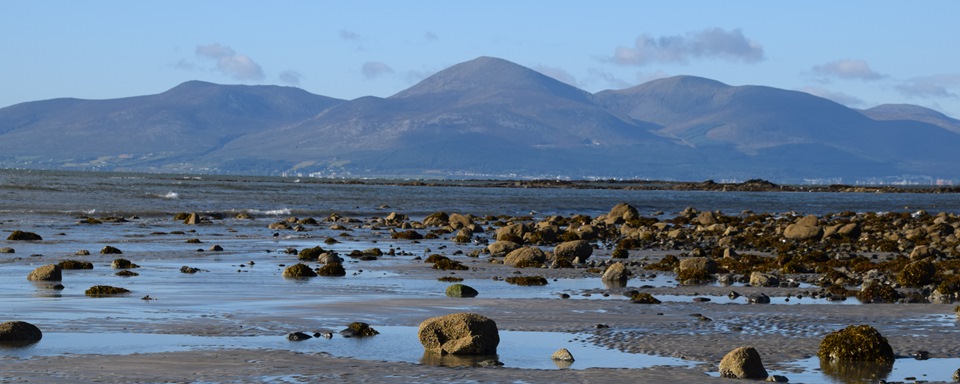
On our driving map of Ireland, quite a few roads in southeast County Down are highlighted in green, which means they are “scenic.” The map is pretty reliable on this point, though of course there are many non-green routes that deserve to be so designated, as Ron and I indignantly note when we’re driving on them. This green-striped region is one of the few parts of Ireland I’d never visited, and it is also where the woman Agnes Scott College is named for lived as a child, the young Agnes Irvine. She sailed to the US in 1817, a girl of eighteen, settling in Pennsylvania, marrying and raising a family. Her son General George Washington Scott would found the college named for her in 1889, one hundred and twenty-five years ago this year. County Down is only about ninety minutes from Dublin, a border county with a long seacoast on the Irish Sea, and is home to Ulster’s tallest mountain range, the very same mountains Agnes Irvine and her mother Mary Stitt Irvine missed when they emigrated in 1817, never to return, the Mountains of Mourne.
Some people say “Mourne Mountains,” but “Mountains of Mourne” as in Percy French’s 1896 ballad, sounds so much better. The name actually comes from a Gaelic clan name, Múghdhorna, pronounced pretty much like “mourn” and a perfect illustration of how in the Irish language, whenever you see a pile-up of vowels, you can be sure they won’t be pronounced.
I wanted to see this part of Ireland and to understand the pull of those mountains. I think the photo at the top of the page explains why the Irvines loved the Mountains of Mourne. Though you can see them from all over the region and out at sea, the best place for a view is along the coast of Dundrum Bay between Newcastle and St. John’s Point, where you’re looking south across the water to the mountains. Standing on this stretch at Tyrella Beach about fifteen miles north of where Agnes lived near Kilkeel, I could grasp the origin of the refrain of the ballad that celebrates them, “Where the Mountains of Mourne sweep down to the sea.” French must have been thinking of this exact view. I snapped over fifty pictures, hoping to capture the changing light, the roll of the waves, the sheen on the rocks, the shore birds darting about in the foreground.
The mountains aren’t the only draw here. Coastal County Down today is both exceptionally beautiful—with nature reserves, hiking trails, charming seaside villages, and its share of historical monuments—and relatively prosperous, an area that is “highly valued even in the UK,” as someone we met explained, a comment that reveals a lot about the unloved child complex Northern Irelanders sometimes experience as part of the United Kingdom. With such splendid scenery at every turn, it’s hard today to imagine anyone wanting to move away from this area, but “You can’t eat scenery,” as the saying goes. The widespread poverty of nineteenth-century Ireland even before the Great Famine was noted by travelers, including William Makepeace Thackeray (Irish Sketch Book, 1843). With a population of over eight million in 1815 (it’s only 6.3 million today) dependent on one crop, the island of Eire was set for disaster when the potato harvest rotted in 1845 and subsequent years. Agnes Irvine got out just in time.
I wanted to see where she was born, where she grew up, the landscape she knew; I wanted to see the Mountains of Mourne as she had seen them. With advice from Susan Dougherty, who wrote her senior thesis and created a film about Agnes Scott, and Betty Scott Noble, Agnes’s great-great-great-granddaughter, we drove up in the hills above Kilkeel to find the cottage and farm that had remained in the family for many years. This is open, lush pastureland with cows, sheep, and horses in every field and scattered, comfortable looking farmhouses. Following Susan’s instructions, we followed the narrow country road until it bent sharply to the left—there was the Irvine home immediately recognizable in spite of the layers of many subsequent generations, changed and not changed at all. Though much building had taken place, the windows and the outline of the cottage were the same as in a photograph from 1890s. There’s a thrill in looking back into history in this way.
I took a few pictures of the farm and fields, trying to determine which were the older buildings, what the original layout might have been, which trees were old enough to have been there in the early 1800s. I turned around, my back to the cottage, to see—unobstructed, spread across the horizon, and perfectly visible—the Mountains of Mourne. The mountains were not something Agnes knew of at a distance and saw from time to time; they were part of her everyday life. No wonder she missed them.
After leaving the Irvine homestead, we drove about fifteen miles west to Newry, a substantial town then and now, where the young Agnes lived with her uncle, went to school, and attended dances. It was easy to find the substantial house where Uncle James had lived, now a print shop. Not from the house itself but from a couple of streets over, I could see the Mountains of Mourne in the distance. Depending on the weather, Agnes would have seen them most days. They would also have been clearly visible along the northern shore of Carlingford Lough when she sailed to America from Warrenpoint with her twice-widowed mother and sister in 1818.
The great British historian G. M Young argued that historians should read everything available from the period they’re writing about, read and reread, “until you hear the people talking.” I would add that you also need to walk in their steps if possible, live in their rooms, see what they saw, know where their sun rose, how their leaves fell in autumn, what the river sounded like as it flowed beneath their windows. I learned something very new to me from visiting Agnes Irvine’s birthplace earlier that day. We had driven gradually uphill to get there, and the elevation put the farm seemingly closer to the mountains than the map suggested. It also afforded a beautiful view of the Irish Sea. Agnes could see more than the Mountains of Mourne from her home. Out the back of the house, maybe between trees at the time, maybe in plain view, she could also see the ocean. Though she hadn’t wanted to leave Ireland, maybe that view of the sea stirred some spirit of adventure in her, some whisper of hope for a new life.
Betty Pope Scott Noble wrote a family memoir (which I co-edited) about her great-great-grandmother Agnes Scott, the full text of which may be found here.

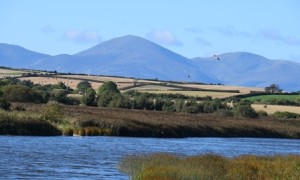
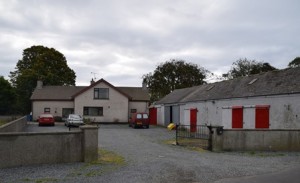

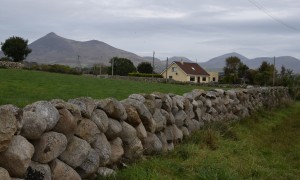
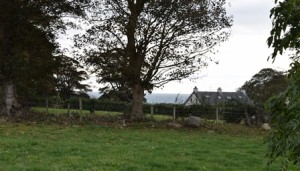
Beautiful, Christine! I knew you would be captivated by that area. Its pull is palpable. I’m so glad you were able to find the house!
Such a rich experience to bring back to your students. Favorite line: “I would add that you also need to walk in their steps if possible, live in their rooms, see what they saw, know where their sun rose, how their leaves fell in autumn, what the river sounded like as it flowed beneath their windows.”
Well done, Chris. Reading your blog is always one of the highlights of my day. xox
I have to echo Michele’s comment–I also was seduced by the lines that she noted. In fact, the whole entry was lovely and lyrical. You are already tempting me back to Ireland–we saw so much in our recent visit, but, reading your blog, I realize how much we have yet to see, how much we have to see!
What beautiful photos and resonant prose! Thank you Christine for making this landscape — so dear to our college’s namesake — come alive.
Thank you for sharing your journey with us. I agree with previous posters about your lyrical writing and tge particular lines about immersing yourself in the environment of your subject. You expressed the idea so beautifully.
Thanks Dawn! I appreciate your reading and advertising my blog to fellow Scotties!
When I read your words, I’m there–or I want strongly to be there. And can I audit your Irish Lit course? –L.
Lee, Thanks for reading and writing a comment, and “Yes” to auditing the course next fall if you still want to!
How cool to see what Agnes saw…and you made me see it so well. In reading your blog, all you taught me about writing resurfaces. Such a treat!! XX
So good to hear from you Katie Rose! Thanks for reading.
Beautiful writing! This is a gift to the rich history of Agnes Scott. <3